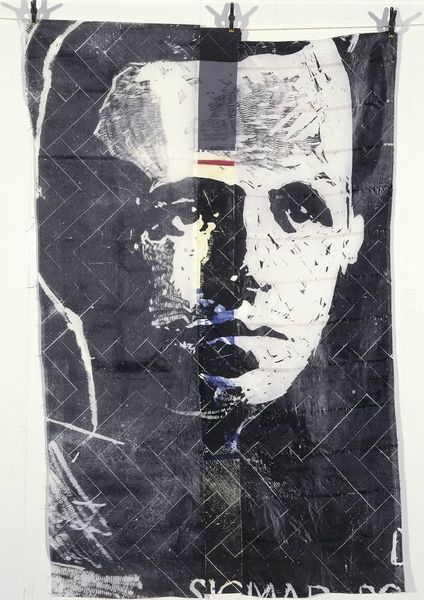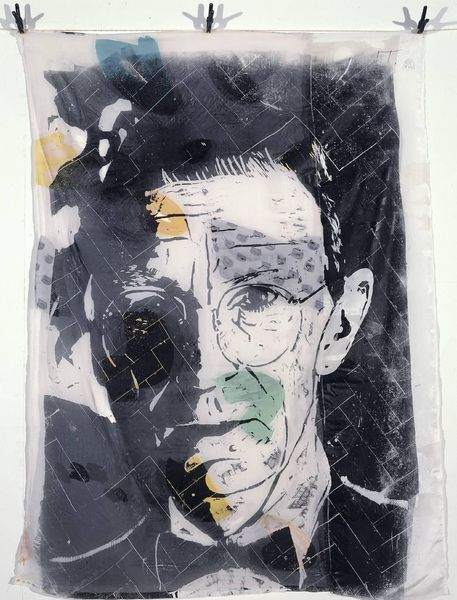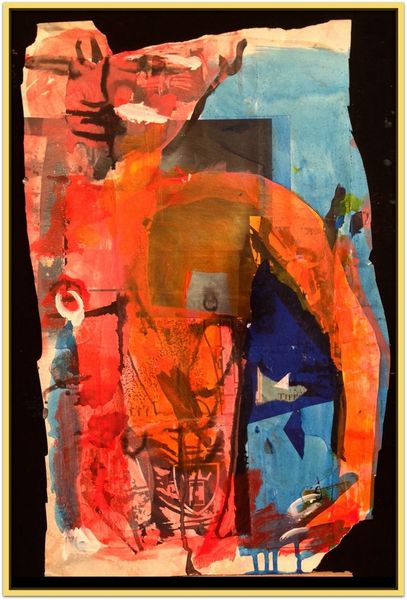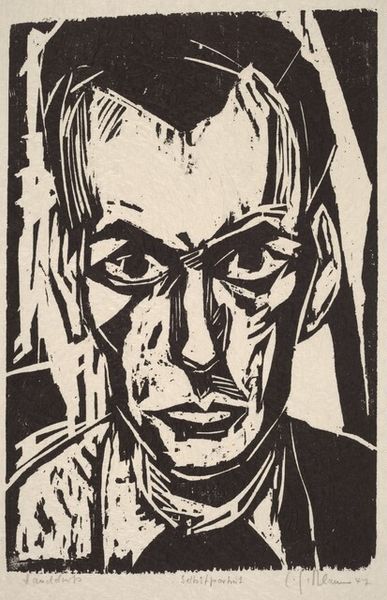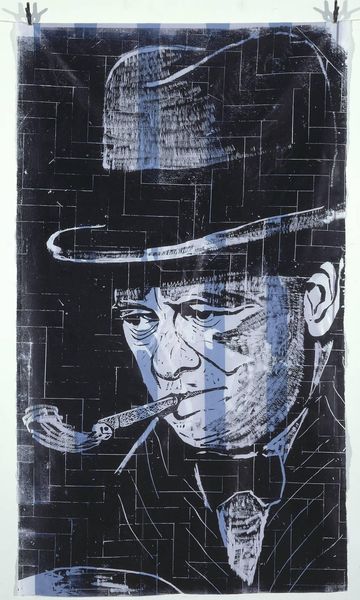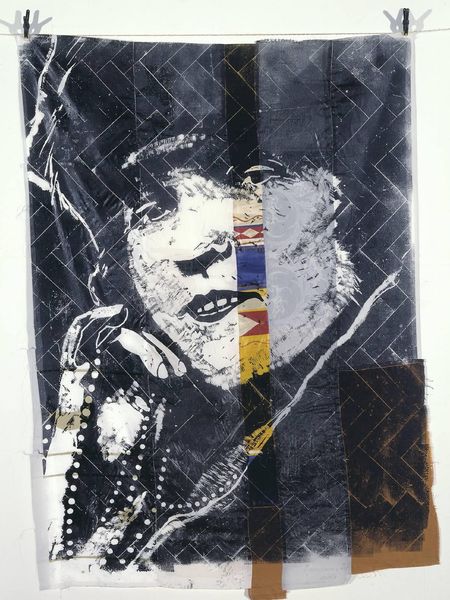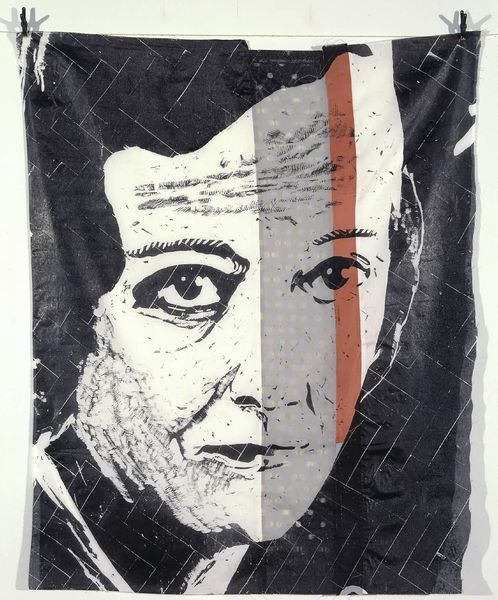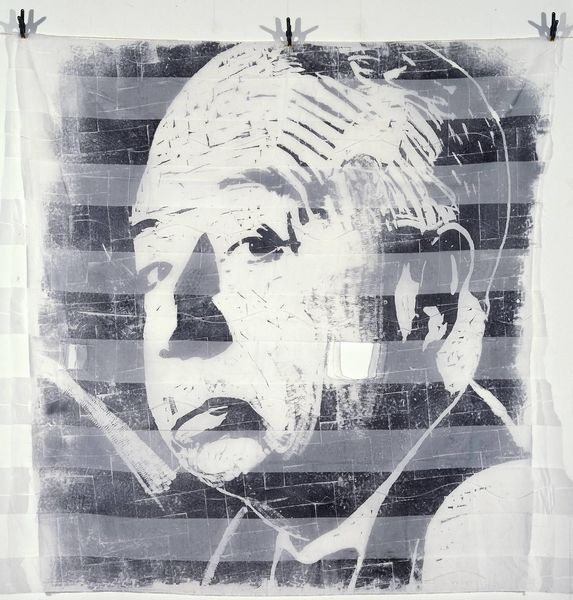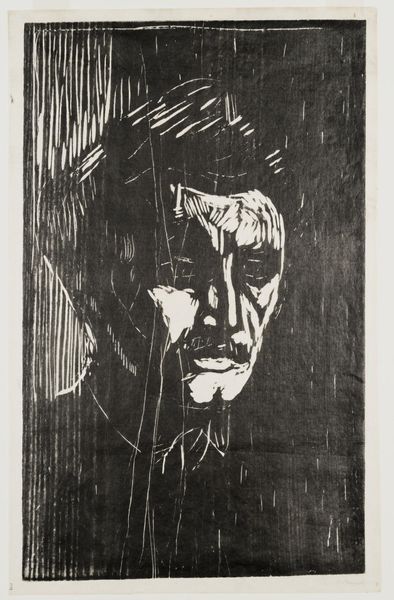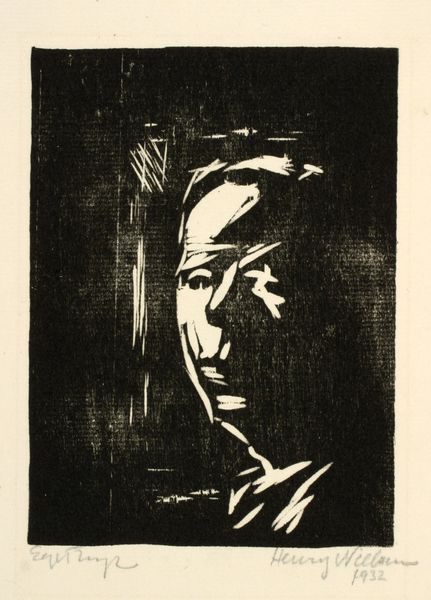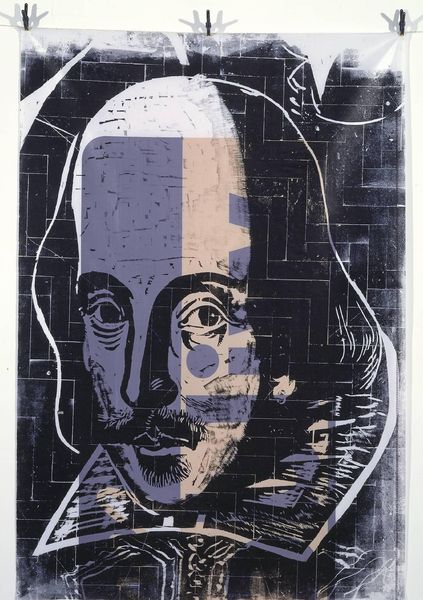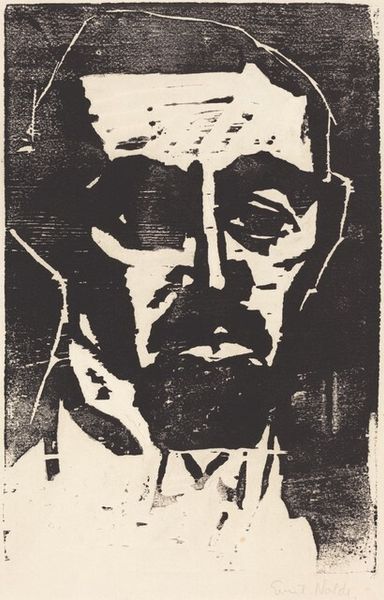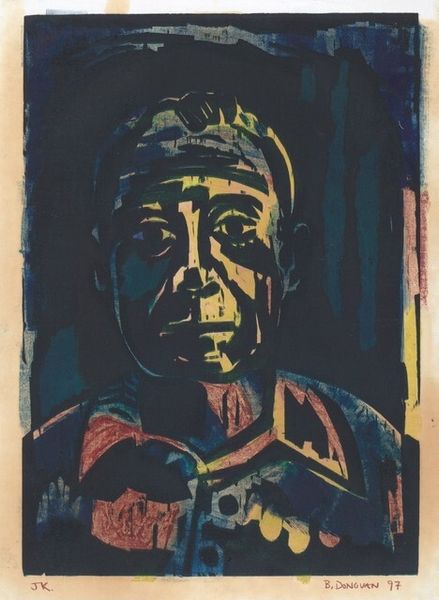
Dimensions: unconfirmed: 1890 x 1592 mm
Copyright: © Thomas Kilpper | CC-BY-NC-ND 4.0 DEED, Photo: Tate
Editor: So, this is Thomas Kilpper's "The Ring: Henry Cooper," a rather imposing mixed-media piece. It's got this raw, almost newsprint feel, yet it's strangely intimate. What strikes you most about it? Curator: Well, first off, the face looms, doesn't it? Almost like a memory surfacing. I can't help but think about Cooper’s resilience in the boxing ring, how Kilpper hints at his strength, but also vulnerability through the contrasting textures. It is as if history is layered on his face, what do you think? Editor: That makes a lot of sense! Now I feel the depth in his story. Thank you for pointing that out. Curator: Absolutely! Art is not a monologue, so to speak.
Comments
tate 6 months ago
⋮
http://www.tate.org.uk/art/artworks/kilpper-the-ring-henry-cooper-p78537
Join the conversation
Join millions of artists and users on Artera today and experience the ultimate creative platform.
tate 6 months ago
⋮
This is one of a series of unique prints generated from a site-specific work created in an office block on Blackfriars Road, in the London borough of Southwark. Orbit House was abandoned and scheduled for demolition when Kilpper gained access to the building in 1999. He carved a giant woodcut into the mahogany parquet covering the tenth floor, comprising an area of approximately 400 square metres. The woodcut depicted a boxing ring surrounded by an audience of some eighty characters whose names were cut around the edge of the image. The artist derived the portraits from photographs and etchings which he made into slides and projected onto the floor before carving the relief with chisels and a chainsaw. He then made a succession of prints, constituting individual portraits, on a range of new and found materials. He used old curtains left in the building, often sewing several pieces together to make one large, rectangular support. Paper sources include advertising hoarding paper and sheets of purple UV polythene film which Kilpper discovered screening windows in some rooms of the building. The herringbone texture of the parquet features strongly on all the uncut areas of the prints which were executed mainly in black ink using a specially-made giant, cement-filled roller. During the exhibition of the work, the prints were suspended on washing lines above the carved floor. Daylight from the surrounding windows filtered through their semi-translucent supports. Visitors would walk on the carved parquet while looking at the prints. A huge banner was printed from the entire surface (The Ring, collection the artist) and hung on the outside of the building for the duration of the installation. Tate owns twenty-one prints, twenty made on fabric (Tate P78537-P78556) and one on paper (Tate P78557). The Ring: Fight On (Tate T07671) is a section of the parquet flooring preserved before the building’s demolition in late 2000.
